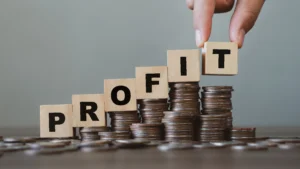Finding the best leverage ratio is a major turning point for anyone hoping to make real, consistent profits in Forex trading. Many traders, especially beginners, are tempted by the idea of using high leverage to make fast gains. However, those who last in this business know that the right leverage is a careful choice, not a gamble. If you want your trading journey to last and your profits to grow, the best leverage ratio will always be the one that fits your style, safeguards your account, and helps you sleep at night.
Why Leverage Is the Most Powerful (and Dangerous) Tool in Forex
Leverage in Forex is like a double-edged sword. With it, you can control a trade much larger than your deposit. This means bigger wins but also bigger losses. If you put $1,000 into your account and trade with 30 to 1 leverage, you’re actually controlling $30,000 in the market. The smallest price move is suddenly magnified.
This is why so many new traders search for the best leverage ratio. They believe there’s a secret number that unlocks huge profits. But the real secret is learning how to use leverage as a tool, not as a shortcut. For both new and experienced traders, the journey to consistent profits begins with understanding your risks and your personal trading style. In reality, optimal leverage in Forex is always about balance and self-control.
Forex Leverage for Beginners: Why Low Leverage Wins
If you’re new to Forex, it can be tempting to select the highest leverage your broker offers. After all, who doesn’t want to turn a small account into something big? But the market punishes reckless risk. Forex leverage for beginners should always be conservative.
For example, let’s say you’re starting with $2,000. If you use 50 to 1 leverage, a two percent loss on a single trade could wipe out your entire account in minutes. On the other hand, with a leverage ratio of 5 to 1, even a losing streak gives you enough margin to stay in the game and learn. Choosing the right leverage is not about being cautious—it’s about being wise.
A practical rule for beginners: start with the lowest leverage you can, such as 2 to 1 or 3 to 1. Focus on protecting your capital. The more you trade, the better you will understand how leverage affects your results. As you gain experience, you’ll naturally find the best leverage ratio that matches your trading style.
How Trading Style Influences the Best Leverage Ratio
Not all traders approach the market the same way. Your unique trading style will help determine the leverage that’s safest and most effective for you.
- Scalpers work on very short time frames, sometimes entering and exiting trades within minutes. They may use higher leverage to make small moves count. However, this demands razor-sharp risk management.
- Day traders hold trades for a few hours, looking for clear setups. They tend to choose moderate leverage, such as 5 to 10 to 1.
- Swing Traders prefer to let trades run for days or even weeks. Lower leverage, like 2 to 5 to 1, helps them withstand overnight swings.
- Position traders focus on the big picture, often holding for months. They may use only 1 to 1 or 2 to 1 leverage because long-term trades face the most unpredictable risks.
Trading-style risk management is about matching your leverage with your strategy. Never let a single trade put your entire account at risk.
Real-Life Example: What Happens With Different Leverage Ratios
Let’s imagine two traders—Neha and Daniel.
Neha trades with 10 to 1 leverage. She risks just one percent of her account on each trade, using tight stop losses and clear targets. Even if she loses several trades in a row, her account survives. Daniel, on the other hand, chooses 50 to 1 leverage and risks five percent per trade. After a few bad trades, he’s forced out of the market, his confidence shaken.
This scenario is common in Forex. Optimal leverage in Forex is not about the highest possible return but the ability to withstand the ups and downs of real trading. By choosing the right leverage, you give yourself room to grow—even if your first trades don’t go as planned.
The Risk of High Leverage: Why Most Traders Lose
Many brokers promote high leverage as a way to attract new clients. But behind the marketing, the truth is clear: high leverage means high risk. If you choose a leverage ratio that’s too high, a single unexpected move can wipe out weeks or months of profit.
For instance, trading with 100 to 1 leverage means a tiny one percent move against your position could cost you your entire account balance. Even the best strategy can’t protect you from a margin call if your leverage is out of control. That’s why choosing the right leverage and focusing on trading style risk management matters more than ever.
How to Find Your Best Leverage Ratio
Here’s a simple approach for any trader, whether beginner or experienced:
- Decide how much you’re willing to lose on each trade. Many professionals recommend risking just one or two percent of your account per trade.
- Calculate your average stop loss in pips, then figure out your position size so that a loss does not exceed your chosen risk percentage.
- Choose a leverage ratio that allows you to take trades without exceeding your risk limits. This is where optimal leverage in Forex comes into play.
If you’re unsure, start low. Test different leverage levels in a demo account until you find a balance between risk and reward that feels right for you.
Why Consistency Matters More Than Fast Profits
Forex trading is not about getting rich overnight. The best leverage ratio for consistent profits is always the one that keeps you trading through wins and losses. Over time, steady growth outpaces lucky streaks.
For example, a trader who uses moderate leverage and makes small but steady returns will likely outperform someone who gambles with high leverage and hopes for the best. Consistent profits come from discipline, not luck.
The Psychology of Leverage: Managing Emotions
Leverage doesn’t just affect your trading results—it impacts your mindset. High leverage can make you feel invincible after a few wins, but it can also create panic after a loss. The emotional swings can lead to poor decisions and bigger losses.
Choosing the right leverage helps you stay calm, focused, and rational. This mental edge is just as important as any trading technique.
Optimal Leverage in Forex: Adjusting as You Grow
As you gain experience, you might choose to adjust your leverage. Some traders lower their leverage during news events or volatile periods to protect their accounts. Others might increase leverage slightly once they’ve proven their risk management is solid.
Remember, the best leverage ratio is not set in stone. Review your performance regularly. If you find that you’re losing more than expected, consider reducing your leverage. If you’re comfortable with your system, you can adjust—but always with caution.
Choosing the Right Leverage: Five Practical Tips
- Start with the lowest leverage your broker offers, especially if you’re new.
- Never risk more than two percent of your account on any single trade.
- Use demo accounts to test different leverage ratios and see how they affect your results.
- Always consider current market volatility. Lower your leverage in uncertain markets.
- Track your trades and results. Adjust your leverage only after you understand your performance.
Actionable Tips for Finding Your Best Leverage Ratio
- Start with low leverage, especially if you are new.
- Use demo accounts to practice with different leverage ratios.
- Never risk more than one to two percent of your account per trade.
- Adjust leverage when trading during major news or in highly volatile markets.
- Keep a trading journal to track how different leverage settings affect your results.
- Focus on building your skills and discipline rather than trying to get rich quick.
The Bottom Line
The best leverage ratio for consistent profits in Forex trading is always personal and based on your trading style, experience, and comfort with risk. While optimal leverage in Forex may vary, most traders do best with lower ratios that protect their capital and keep them trading longer. Choosing the right leverage is not just about making bigger trades but about building a foundation for long-term growth and success.
If you approach leverage thoughtfully and focus on risk management, you will give yourself the best chance at steady profits in the Forex market. Remember, successful trading is a marathon, not a sprint. The right leverage ratio helps you stay in the race, even when the markets are tough.
By making smart choices and constantly refining your approach, you’ll discover that consistent profits are within reach when you find the best leverage ratio for your unique trading journey.
Read here to learn more about “High Leverage Trading Mistakes to Avoid Now for Better Results“.

I’m Chaitali Sethi — a seasoned financial writer and strategist specializing in Forex trading, market behavior, and trader psychology. With a deep understanding of global markets and economic trends, I simplify complex financial concepts into clear, actionable insights that empower traders at every level. Whether it’s dissecting winning strategies, breaking down market sentiment, or helping traders build the right mindset, my content bridges the gap between information and implementation.




